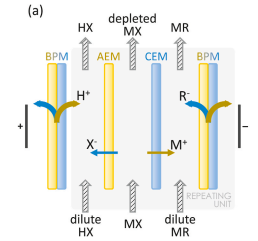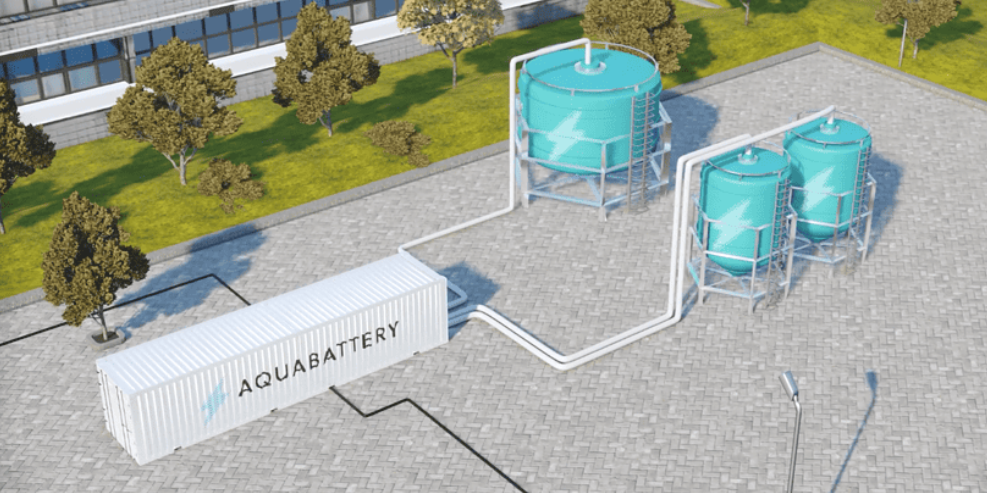It is a well-known fact that something degrades when you do not use it. An ice cream should be eaten promptly, or it will melt (assuming it is bought at a time the temperature is above freezing), a gift card should be spent before it expires, money in the bank loses value through inflation. Another fact of life is that preserving something valuable is not free. A classic car needs a good dry garage, a house in temperate climates needs heating and ventilation. If you leave something to nature, nature will make it disappear (some things, alas, very slowly, as is the case with micro-plastics or nuclear waste.)
With these two facts in mind, let’s see how they work out for storing electricity. Just like ice cream, if you receive too much of it to eat before it melts, you could store it in a freezer, but this costs money, and some of the quality may be lost. Storing electricity is certainly costly, not just in terms of the hardware to store it, but also in terms of round-trip efficiency; there is always a loss, you cannot get all the electric energy back. Not storing it, however, can be more wasteful and expensive, especially if the energy is ‘free’, for instance solar energy on a sunny day or wind energy on a windy day.
There are many ways of storing electric energy. It can be stored in a spinning flywheel, it can be stored in water, pumped to a higher level, it can be stored in giant capacitors. The most common way, however, is to use it to drive a chemical reaction. Two well-known examples are the lead-acid battery (1) and the Li-ion battery (2).

Energy transition
As more electricity is generated by solar panels and wind turbines, there is often a mismatch between supply and demand. This happens on a small scale (e.g. when solar panels at home generate a lot when the electric car is away and cannot be charged), and on a large scale. Additionally, the switch to using electricity for heat pumps, cooking, electric cars,etc., leads to large fluctuations in the demand which the grid has to handle. Storing electricity on a rather large scale has become important, and new types of batteries are being developed.
An interesting new battery is the acid-base flow battery. It uses electricity to produce an acid solution and a base solution and stores both liquids in large tanks. The process can be reversed to retrieve the electric energy.

The chemistry is as follows:

The tricky bit is the reactor (or ‘stack’) which performs the dissociation of water and the separation of the ions. It works with membranes which are selective for specific ions (anion-exchange membrane (AEM) and cation-exchange membrane(CEM) and a bipolar membrane (BPM), which is not permeable, but causes the water dissociation at its centre.
The stored acid and alkaline solutions represent the energy. When electricity is needed, these solutions flow through the stack and are combined to form salt water and electric energy.
AquaBattery emphasises the fact that the bulk materials (water, salt) are cheap and available in large quantities. The liquids which store the energy (solutions of hydrochloric acid and of caustic soda) can be stored cheaply and for almost unlimited times in cheap tanks. However, the membranes are not cheap, and still need to be optimised.
Numbers
The battery technology will not be studied in detail here, but some basic questions must be asked.
- Q1: how much energy can be stored per m3? (energy density)
- Q2: how much power can be absorbed or reclaimed? (kW)
- Q3: what is the overall efficiency?
- Q4: how much does it cost?
AquaBattery has supplied a paper [2] which contains the answers to these questions. There are two answers to each question: one for the situation in 2020, from the Demonstration Pilot, and one for the ‘First-of-a-Kind Commercial Unit’ expected (in 2020) to be built by 2025. The second answer to each question is, therefore, an estimate only. The pilot plant can store 7 kWh, and deliver 1 kW; the commercial unit will store 700 kWh, and deliver 100 kW.
- A1: 18 kWh in 1 m3 of acid and 1 m3 of base (or 0.009 kWh/kg of liquid)
- the pilot plant has storage tanks for acid and base of 2000 litre each, a 10,000 litre tank for 4000 litre salt solution.
- A2: pilot: 1 kW, commercial: 100 kW
- A3: pilot: 55.9 %, commercial: <63%
- A4: pilot: € 137,000 (€ 19,600/kWh), commercial: € 328,000 (€ 470/kWh)
These numbers are not immediately impressive. It is not fair to compare the results with a well-established technology, as the acic-base flow battery is still being developed, and has promising characteristics. On the other hand, it helps to compare new technologies with familiar ones. The well-known lead-acid battery, moreover, can still be optimised [3].
A very quick check: a car battery of 52 Ah, 12 V, 470 A costs (consumer price) € 80 and weighs 12.7 kg. This means it can store electricity at 0.05 kWh/kg and € 128/kWh. Both values are better than the ‘First-of-a-Kind’ commercial unit by a factor 5.5 and 3.7 respectively. The efficiency of a lead-acid battery is also higher: above 90% (except below freezing).
Conclusion
This shows that the Acid Base Flow Battery is not, yet, the answer to the battery demand. It has an appeal for specific applications, but the final attractiveness depends strongly on the projected improvements of the membranes. This situation is similar to many emerging technologies; the current technologies have been around for a long time and have been developed to almost their full potential. A new technology is often inferior to the old technology at the start, but holds a promise for when it reaches the same level of maturity as the current technology. In this phase, it requires vision to invest in the new technology. A part of that vision should be to check the numbers for the long term. For AquaBattery, those numbers may have to wait until the commercial unit has been built and operated for some time.
[1] ‘Bipolar membranes: A review on principles, latest developments, and applications’ by R. Pärnamäe et al., J. of Membrane Science 617 (2021)
[2] ‘The Acid-Base Flow Battery: Sustainable Energy Storage via Water Dissociation with Bipolar Membranes’ by R. Pärnamäe et al., Membranes (2020), 10




